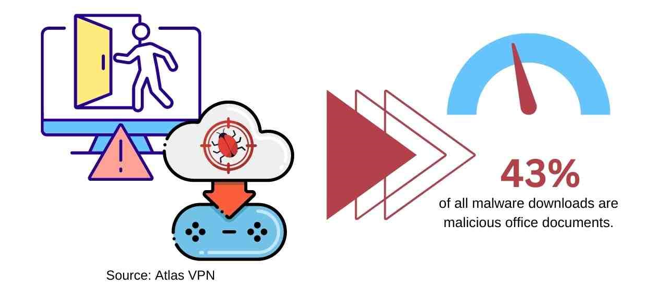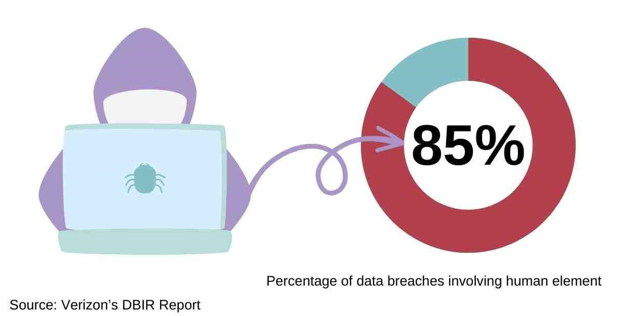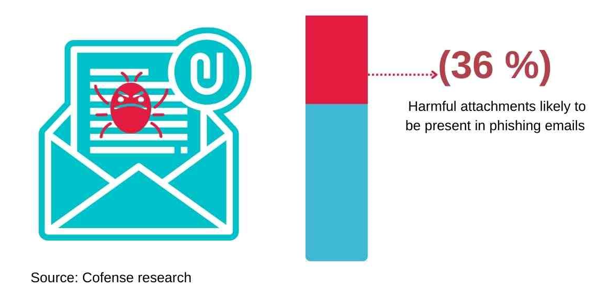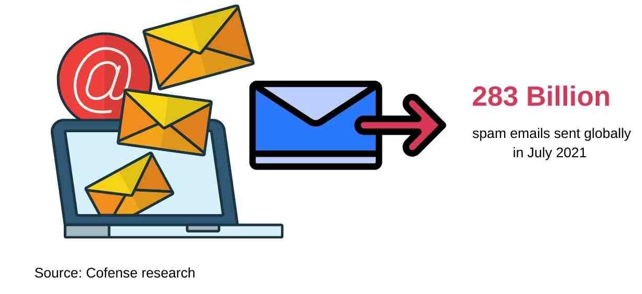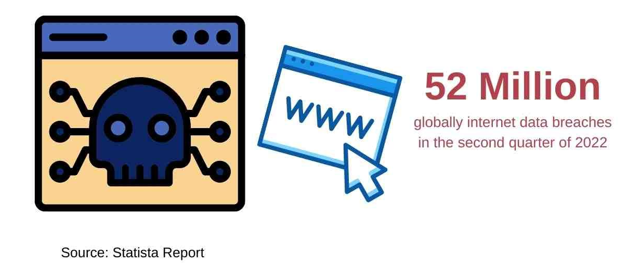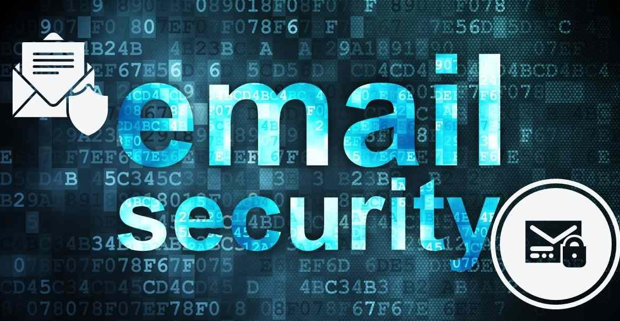
Why is email security important?
Email communications are frequently intercepted, examined, and spied on.
Hackers and cybercriminals use email as a technique to disseminate malware, spam, and phishing scams. Additionally, it’s a common way for corporate data breaches.
Because of this, you need to be always on guard and cautious about how you use email in communication.
According to research by Statistica, as of October 18, 2021, the United States sent approximately 8.6 billion spam emails in a single day, making it the country with the greatest daily spam email worldwide.
This increase has made email security a must for all users. To be safe, it’s essential to put effective email security practices into place.
There are many ways in which applications of AI in email security can boost your email security.
In this article, we will cover 5 main artificial intelligence approaches to email security in 2025 and their relevance to your organization.
Let’s have a look.
1. Link Analysis
In emails, links are frequently used.
The body of most emails typically includes links that direct recipients to a website, blog, landing page, or resource.
However, since links are overlooked, you can not easily be able to spot one with malicious intent. In fact, according to a report by the Atlas VPN team, 43% of all malware downloads are malicious office documents.
A major challenge in email security is dealing with the diversity and complexity of email content, which includes text, images, links, and more.
Traditional approaches to scanning links from emails are not able to flag a malicious link as they only check for basic content attributes.
Link scanning is one of the applications of AI in email security. It protects you or your business from potentially dangerous links.
Machine learning models are used to analyze the links in the email and provide useful insights and analytics to identify suspicious ones.
Natural language processing has also been used to analyze the intent of messages and determine any potential email security risks.
So you can keep track of what kind of email content you receive and if something seems suspicious (or even just plain wrong), then it will be detected immediately.
Read Also: The Rise of AI: Transforming Business and Daily Life
2. Behavior Analytics
Is unusual email activity a potential security threat?
Traditional approaches struggle to identify when there is a departure from established trends and to identify which of these anomalies might pose a potential security threat.
This inefficiency in handling unusual email activity is a large contributing factor to the fact that suspicious human activity is likely to cause a data breach. In fact, according to a report by Verizon’s DBIR, 85% of data breaches involve a human element.
Traditional approaches to email security have trouble identifying compromised accounts and insider threats. User accounts can occasionally be compromised.
An essential tool for email security is behavior analytics, one of the main applications of AI in email security.
It’s possible to identify suspicious email activity and prevent attacks by analyzing the behavior of users. Trends that are associated with malicious intents can be identified from user email activity analysis.
Behavior analytics can be used to detect anomalies in user behavior, such as unusual login times, unusual email activity or unexpected file access.
In addition, behavior analytics can be used to evaluate the effectiveness of your email security controls. By monitoring email activity, it is possible to identify issues that need to be addressed.
3. Attachment scanning
Malicious attachments are the most common way for malware to spread.
If you receive an email from someone you don’t know and it contains an attachment, there’s a chance that it’s malicious.
So it’s important to scan them before opening them. However, traditional email security solutions can’t always keep up with the volume and variety of email attachments, meaning that some threats can slip through the cracks.
It’s therefore easy for email users to inadvertently spread malware by opening an infected attachment.
According to Cofense research, harmful attachments (36%) are significantly more likely to be present in phishing emails than links to malicious websites (38%).
Malicious attachment scanning is also one of the applications of AI in email security
AI-based email security solutions are often able to process attachments more quickly than their traditional counterparts, meaning that there is less of a delay between an email being received and it is scanned.
By using machine learning algorithms, email attachment scanning software can rapidly evolve to become more effective at identifying threats.
As a result, AI plays an increasingly important role in email security.
In addition, AI-based email attachment scanning can be customized to your specific needs or of your business making it an effective security measure.
4. Email Filtering
Email filtering is another major application of AI in email security.
Many strategies are in place to help in filtering your email messages as soon as you send or receive them.
Commonly used techniques to filter emails do not prevent spam emails from reaching your inbox. They include blocklisting emails, safelists approved emails, greylisting to fight spam, using antivirus software, and reputation-based email filters.
According to a report by Statistica, the volume of spam emails sent globally each day peaked in July 2021, when about 283 billion of the 336.41 billion emails sent that month were spam.
How do you eliminate spam emails from your inboxes?
AI spam filters go beyond simply scanning spam emails using pre-existing rules since machine learning has the ability to adapt to changing circumstances.
As they continue their spam filtering activity, they create new rules and learn over time, becoming more effective at identifying and blocking threats.
By analyzing email content and sender behavior, AI can help to identify and block suspicious messages that could cause serious damage.
If you want to take email security seriously, an AI-based email filter may be the best option.
AI is therefore effective at preventing unwanted spam in your inboxes.
5. Email Encryption
Email encryption encrypts or masks the content of email messages to prevent potentially sensitive information from being seen by anybody other than your recipient.
You’ll find it usual to email unencrypted private information such as account numbers, identification numbers, or login credentials.
Email attachments are completely insecure and offer no way to control access to them unless you take further encryption measures to secure the files.
According to a report by Statista, Around 52 million data breaches were seen by internet users globally in the second quarter of 2022.
Email has also historically been a weak point, especially when it comes to public or unprotected Wi-Fi networks. Your login information may even be intercepted in emails sent within a protected corporate network.
AI email encryption, which is one of the applications of AI in email security, is a great way to make sure your emails are secure from prying eyes.
Machine learning and artificial intelligence can be used to analyze the contents of an email, which then determines if it needs to be encrypted or not.
Machine learning has also been used to come up with strong encryption algorithms that are hard to decode for hackers. This, therefore, makes your email secure even with sensitive information in it.
With this, your sensitive information is kept safe from prying eyes.
Conclusion
We have looked at 5 main artificial intelligence approaches to email security in 2025.
One of the ways you can benefit from applications of AI in email security is to partner with a secure email solutions provider that leverages AI-powered solutions.
For example, Sansone Auto Mall was experiencing a noticeable increase in the amount of spam, malware and phishing emails. To help protect themselves from this, they partnered with Guardian Digital EnGarde to safeguard their network.
As a result, there was a 99% decrease in spam and an increase in network security.
You should therefore choose the right approach.
Click here to sign up for a free discovery call to see how we can help you incorporate AI email security solutions into your workflow.


